Among the treasures of Alabama’s diverse avian landscape, the blue birds in Alabama hold a special allure for bird enthusiasts. These birds, painted in shades of azure, cerulean, and cobalt, enliven the state’s skies and forests.
Whether you’re a seasoned birder or just starting out, our comprehensive guide to the blue birds in Alabama is your passport to understanding these stunning creatures. And with our free photo guide included, you’ll get an up-close look at their vibrant beauty. Join us in celebrating the sapphire gems of Alabama’s birding world!
Blue Birds Found In Alabama
Alabama’s varied geography, stretching from the Appalachian foothills in the north to the Gulf of Mexico’s coastline in the south, provides an array of habitats suitable for numerous bird species. This mosaic of terrains — encompassing dense woodlands, wetlands, river valleys, and coastal plains — offers nesting, breeding, and migratory stopover points for countless avian species.
Eastern Bluebird
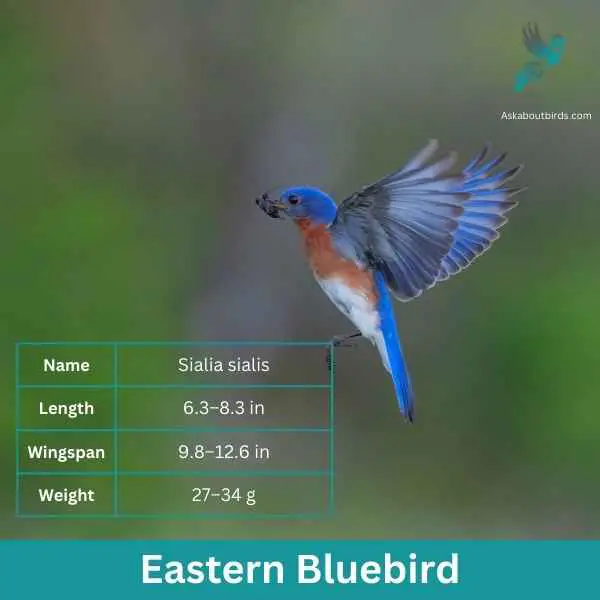
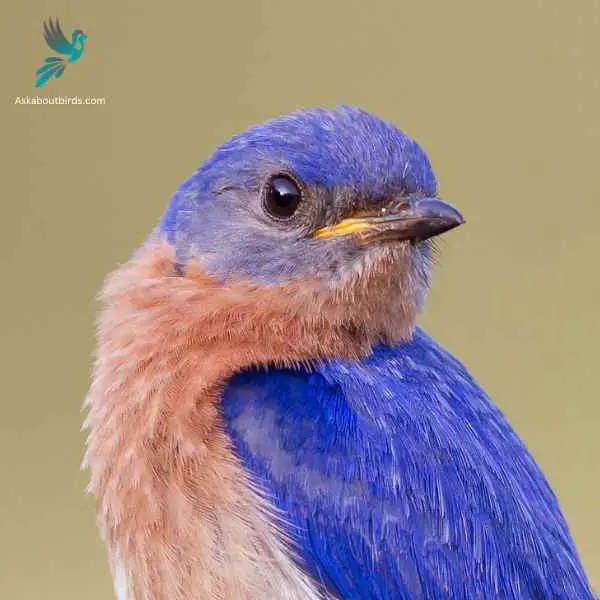
| Feature | Measurement |
|---|---|
| Scientific Name | Sialia sialis |
| Length | 6.3–8.3 in |
| Wingspan | 9.8–12.6 in |
| Weight | 27–34 g |
The Eastern Bluebird (Sialia sialis) is a small thrush found in open woodlands, farmlands, and orchards, and is recognized for its vibrant blue and red coloration. Male Eastern Bluebirds are dazzling with bright blue upperparts and a rusty or brick-red throat and breast, while females, though less colorful, still offer a similar pattern. The bird is native to North America and is commonly seen east of the Rockies, from Canada to the Gulf States and southeastern Arizona to Nicaragua.
Eastern Bluebirds feed on insects, wild fruit and berries. They have a gentle nature and are often seen perched alone or in small groups in the open, scanning the ground for prey. They are cavity nesters and will use old woodpecker holes or birdhouses if they are the right size.
Indigo Bunting


| Feature | Measurement |
|---|---|
| Scientific Name | Passerina cyanea |
| Length | 4.5–5.1 in |
| Wingspan | 7.1–9.1 in |
| Weight | 11.2–21.4 g |
The Indigo Bunting is a strikingly vibrant songbird, often hailed for its brilliant blue plumage and melodic song that graces woodlands and meadows during the warmer months.
Appearance: Males are renowned for their bright indigo blue feathers, which can appear darker in certain lights. Females and juveniles, on the other hand, are brown with subtle hints of blue on their wings and tail. The species lacks the vibrant streaking or spotting commonly found in many other songbirds.
Diet: Indigo Buntings primarily subsist on seeds, especially during non-breeding seasons. During the breeding season, they also consume a variety of insects such as beetles, caterpillars, and spiders, providing essential protein for their growing chicks.
Reproduction: Indigo Buntings build their nests close to the ground in shrubs or low tree branches. These nests, crafted meticulously with grasses and other plant materials, cradle clutches of typically 3 to 4 eggs. After hatching, the young are fed by both parents until they’re ready to fledge.
Blue Grosbeak
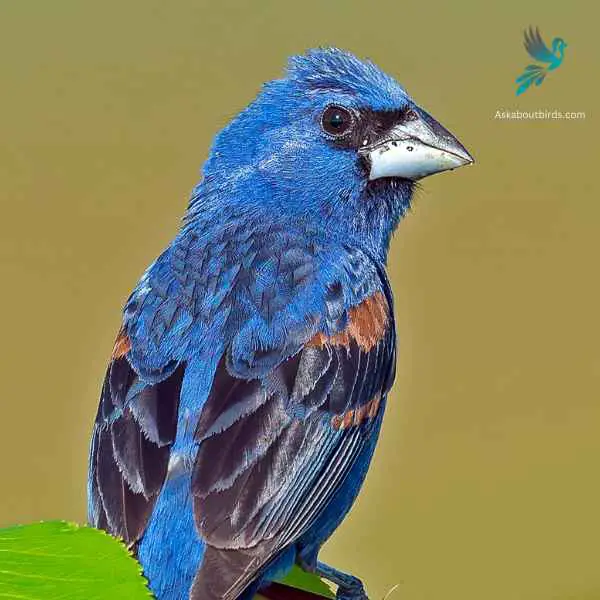
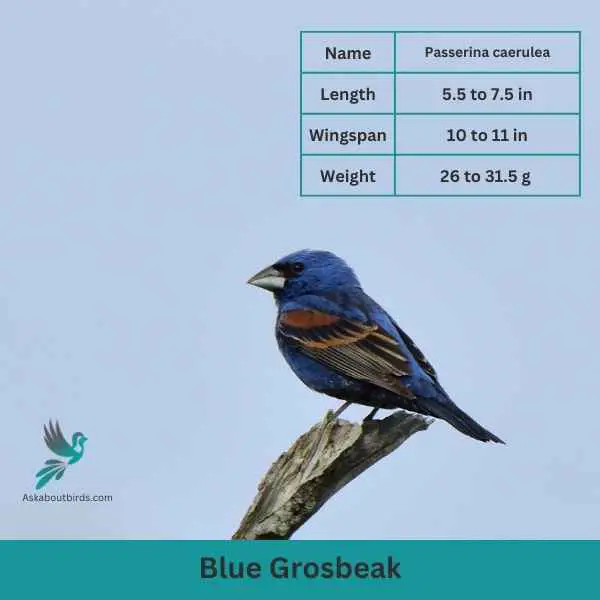
| Feature | Measurement |
|---|---|
| Scientific Name | Passerina caerulea |
| Length | 5.5 to 7.5 in |
| Wingspan | 10 to 11 in |
| Weight | 26 to 31.5 g |
The Blue Grosbeak is a medium-sized songbird found in North and Central America. The male Blue Grosbeak displays stunning plumage with deep blue feathers on its body and head, while the female has more subdued brownish tones. Both sexes have a thick, conical bill, which gives them their name “grosbeak,” meaning large beak.
These birds prefer open habitats such as grasslands, brushy areas, and woodland edges. Blue Grosbeaks are known for their melodious songs, which consist of a series of rich and varied notes. They primarily feed on seeds and insects, using their strong beaks to crack open seeds and forage on the ground or in low vegetation.
Blue Jay
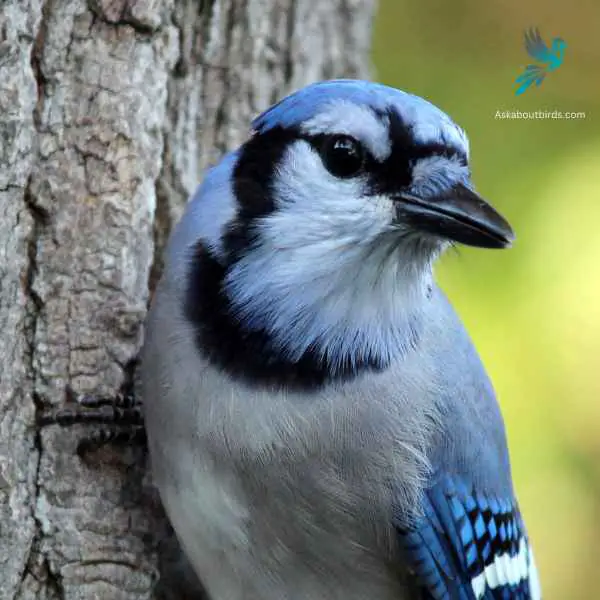
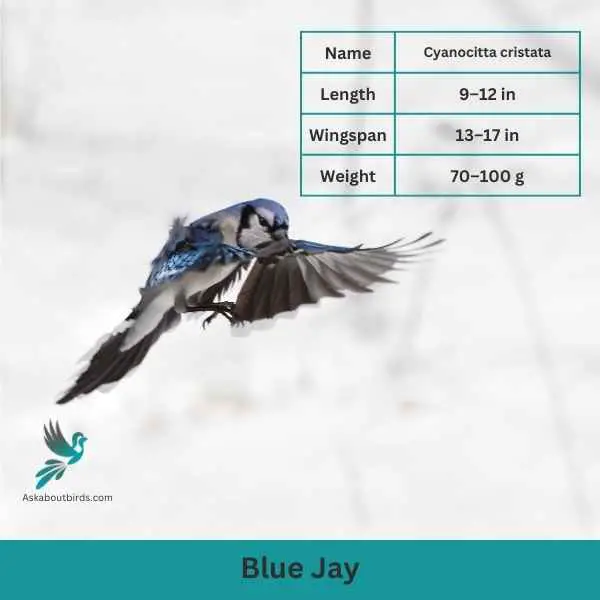
| Feature | Measurement |
|---|---|
| Scientific Name | Cyanocitta cristata |
| Length | 9–12 in |
| Wingspan | 13–17 in |
| Weight | 70–100 g |
The Blue Jay is a vibrant and easily recognized bird, known for its intelligence, distinctive calls, and bold behavior, commonly found throughout the eastern and central United States.
Appearance: The Blue Jay sports a striking blue upper body with white and black markings. Its face has a pronounced white patch with a black necklace that runs across the throat and around the head. The bird also features a pronounced blue crest, which can be raised or lowered, and its wings and tail are brightly colored with black bars and white tips.
Diet: Blue Jays are omnivores. Their diet consists primarily of seeds, nuts, especially acorns, fruits, and small insects. They’ve also been known to eat eggs or nestlings of other birds occasionally. Blue Jays often store food items in caches to eat later.
Reproduction: Blue Jays are monogamous birds that form long-lasting pair bonds. They typically build their nests in trees or large shrubs, constructing them from twigs, grass, and sometimes using mud as a binder. The female lays a clutch of 3 to 6 eggs, which are pale blue or sometimes white with brown speckles.
Northern Parula
Scientific Name: Setophaga americana
Length: 4.3-4.7 inches
Wingspan: 6.3-7.1 inches
Weight: 0.2-0.4 oz
The Northern Parula is a small warbler recognized for its vibrant coloration and melodic song.
Appearance: The Northern Parula displays a bluish-gray plumage on its upperparts and a yellowish chest with a distinctive dark band. Males often have a brighter appearance, with striking blue feathers on the head and back.
Diet: Northern Parulas mainly feed on insects and spiders. They are adept foragers, often flitting through foliage to pluck their prey from leaves, branches, or even in mid-air.
Reproduction: Northern Parulas create pendant-shaped nests, often constructed from mosses and lichens. These nests are typically located high in trees. The female lays a clutch of 3-7 eggs, which are white with brown markings.
Cerulean Warbler
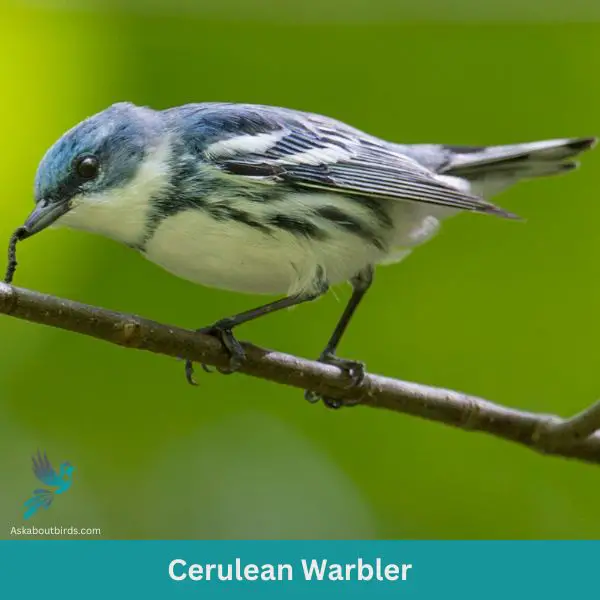
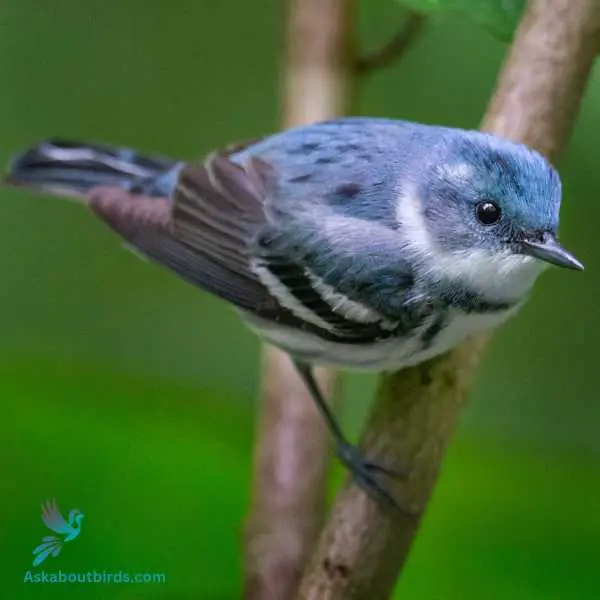
| Trait | Cerulean Warbler |
|---|---|
| Scientific Name | Setophaga cerulea |
| Length | 4.5 inches |
| Wingspan | 7.9-8.7 inches |
| Weight | 0.3-0.4 ounces |
The Cerulean Warbler is a striking songbird known for its sky-blue plumage and flitting movements in the forest canopy.
Appearance: Males boast a vibrant cerulean blue color on their upperparts, with streaked underparts, and a black necklace. Females have a more subdued bluish-green hue and lack the prominent black markings seen in males.
Diet: The diet of the Cerulean Warbler is predominantly made up of insects and spiders. They actively forage high in the treetops, gracefully maneuvering through leaves and branches.
Reproduction: Cerulean Warblers nest in the upper branches of tall deciduous trees. The female weaves a shallow cup-shaped nest and lays a clutch of 3-5 eggs.
Black-throated Blue Warbler
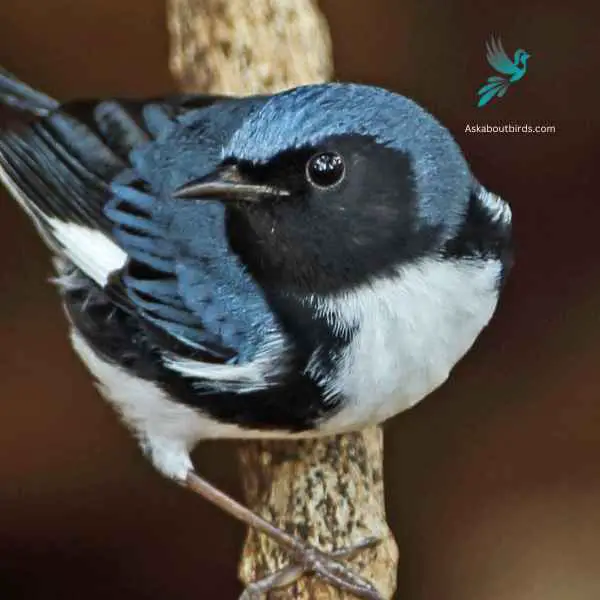
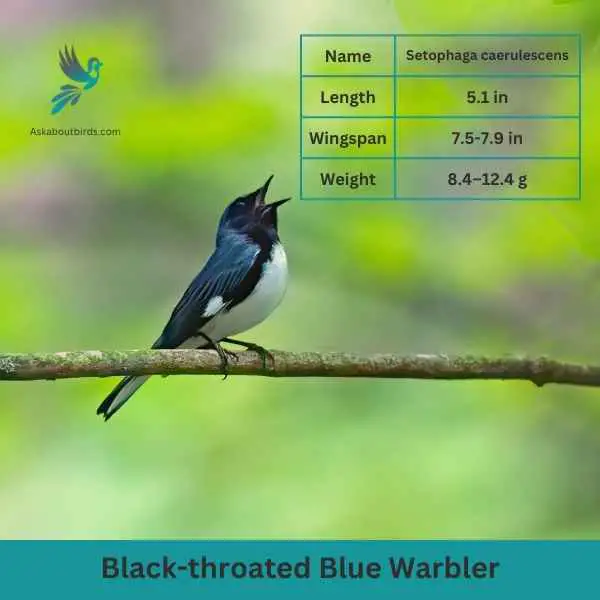
| Feature | Measurement |
|---|---|
| Scientific Name | Setophaga caerulescens |
| Length | 5.1 in |
| Wingspan | 7.5-7.9 in |
| Weight | 8.4–12.4 g |
The Black-throated Blue Warbler is a small migratory bird that breeds in the eastern United States and parts of Canada. The male Black-throated Blue Warbler displays a striking appearance with deep blue plumage on its upperparts, contrasting sharply with a black throat and a white belly. Females, on the other hand, have more muted colors, featuring grayish-olive plumage with a lighter throat.
These warblers prefer deciduous and mixed woodlands, where they forage actively for insects and spiders. They have a slender bill, which they use to extract prey from foliage and tree bark. During the breeding season, males perform courtship displays, showcasing their vibrant plumage and singing a high-pitched song to attract mates.
Black-throated Blue Warblers are known for their long-distance migration. They spend their winters in the Caribbean and Central America, where they inhabit various forested habitats. They construct cup-shaped nests in trees or shrubs, often placing them close to the ground.
Tree Swallow
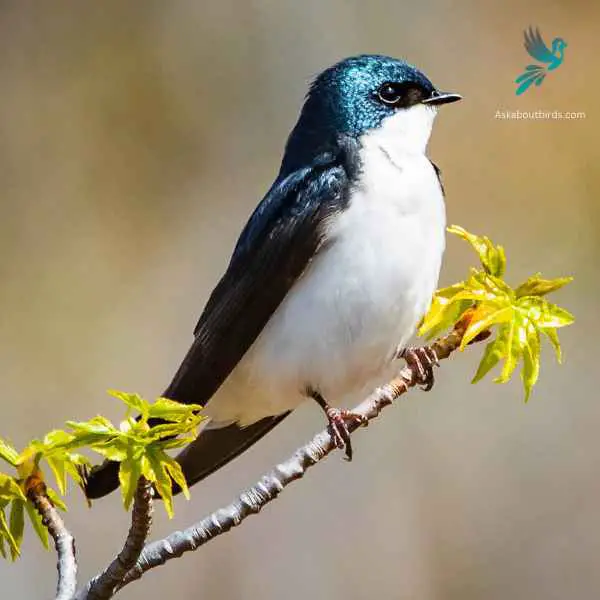
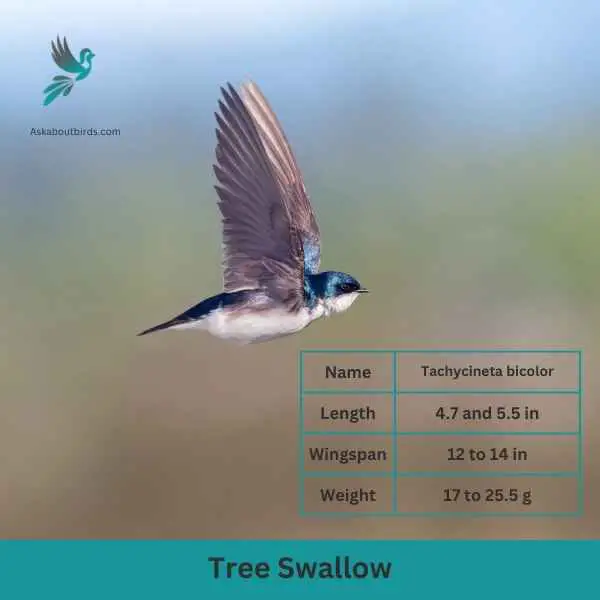
| Feature | Measurement |
|---|---|
| Scientific Name | Tachycineta bicolor |
| Length | 4.7 and 5.5 in |
| Wingspan | 12 to 14 in |
| Weight | 17 to 25.5 g |
The Tree Swallow is a graceful and agile bird, best recognized for its iridescent blue-green upperparts and sweeping flight patterns over open fields and water.
Appearance: The Tree Swallow is sleek with a streamlined body. The upperparts shine with a blue-green iridescence while the underparts are white. They possess long, pointed wings and a slightly forked tail, aiding in their agile flight.
Diet: Tree Swallows primarily feed on flying insects, skillfully catching them mid-air. During colder months when insects are scarce, they can switch to a diet of berries, particularly those of the bayberry, which other birds might find hard to digest.
Reproduction: Tree Swallows are cavity-nesters, typically choosing natural holes in trees or using bird boxes. They line their nests with feathers, creating a soft environment for the eggs. The female will lay a clutch of 4 to 7 white eggs.
Barn Swallow
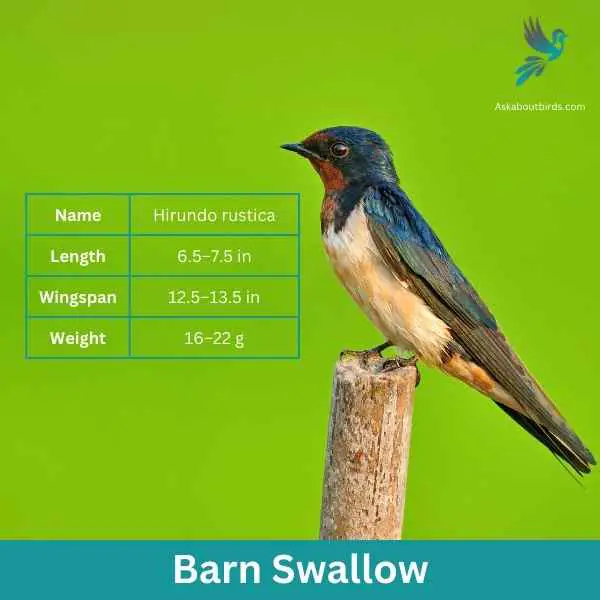

| Feature | Measurement |
|---|---|
| Scientific Name | Hirundo rustica |
| Length | 6.5–7.5 in |
| Wingspan | 12.5–13.5 in |
| Weight | 16–22 g |
The Barn Swallow is a sleek, agile bird renowned for its graceful flight patterns and iconic forked tail, often seen darting over fields and water bodies in search of flying insects.
Appearance: Barn Swallows have deep blue, almost iridescent, upperparts and a rufous to tawny underbelly. Their distinctively forked tail and long wings give them a streamlined look. Both males and females have a similar appearance, though males often exhibit slightly brighter colors and a deeper fork in the tail.
Diet: Barn Swallows feed primarily on flying insects, which they catch in mid-air during their agile and acrobatic flights. Their diet includes flies, beetles, moths, and other small flying insects.
Reproduction: Barn Swallows are known for building their mud nests on man-made structures, particularly barns, bridges, and eaves. The nest is cup-shaped and made from mud pellets, often lined with feathers. The female lays a clutch of 4 to 6 eggs.
Purple Martin
Scientific Name: Progne subis
Length: 7.5-8.7 inches
Wingspan: 15.3-16.1 inches
Weight: 1.6-2.1 oz
The Purple Martin is North America’s largest swallow, known for its graceful flight patterns and communal nesting behavior.
Appearance: Male Purple Martins are almost entirely dark purple-blue with a glossy sheen, while females and juveniles are paler, featuring grayish underparts and a blueish-black upper body.
Diet: Purple Martins predominantly feed on flying insects, catching them skillfully in mid-air. Their diet consists of beetles, flies, moths, butterflies, dragonflies, and other airborne insects.
Reproduction: Purple Martins are famous for nesting in man-made structures, especially in the eastern parts of North America. These birds are colonial nesters, often occupying birdhouses with multiple compartments. The female typically lays a clutch of 4-6 white eggs.
Cliff Swallow
Scientific Name: Petrochelidon pyrrhonota
Length: 5-6 inches
Wingspan: 11-13 inches
Weight: 0.8-1.0 oz
The Cliff Swallow is recognized for its square-tipped tail and colony-based nesting habits, often under eaves or on cliffs.
Appearance: Cliff Swallows have a striking appearance with a blue-black back, pale underparts, and a characteristic dark reddish-brown face and throat. A pale, orangish rump and a creamy forehead further distinguish them.
Diet: Mainly insectivorous, Cliff Swallows feed on a variety of flying insects, including beetles, flies, and winged ants. They capture their prey in mid-air, often flying in large, swift groups.
Reproduction: Notably, Cliff Swallows are colonial birds that build gourd-shaped mud nests, usually under eaves, bridges, or on cliff faces. A unique feature is their construction of these nests in tight clusters. The female typically lays a clutch of 3 to 6 eggs, which are white with small brown spots.
Belted Kingfisher

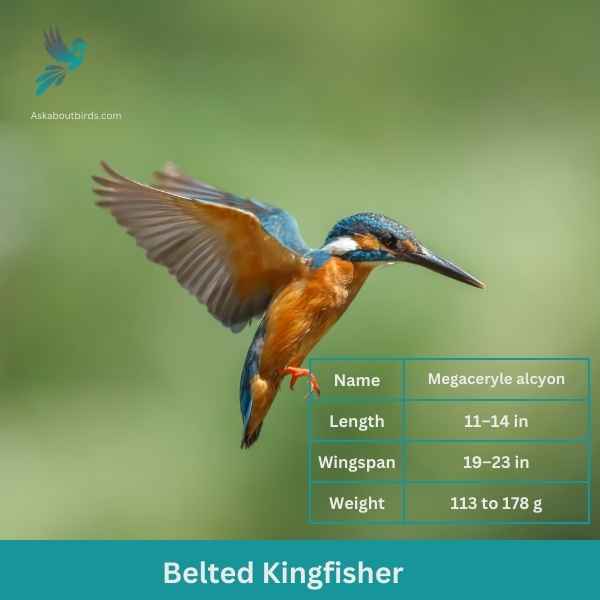
| Feature | Measurement |
|---|---|
| Scientific Name | Megaceryle alcyon |
| Length | 11–14 in |
| Wingspan | 19–23 in |
| Weight | 113 to 178 g |
The Belted Kingfisher is a distinctive and easily recognizable bird, frequently observed near water bodies, where it can be seen diving headfirst to catch prey.
Appearance: Sporting a prominent crest, the Belted Kingfisher has a slate blue-gray upper body and white underparts. Males possess a single blue band across their white chests, while females have an additional rufous band, making them one of the few bird species where females are more brightly colored than males. Their bill is long, sharp, and dagger-like.
Diet: As expert fishers, Belted Kingfishers mainly prey on small fish, but they’ll also consume crustaceans, insects, and amphibians. They’re known for their hunting tactic of hovering over water, spotting their prey, and then diving swiftly to snatch it.
Reproduction: Belted Kingfishers nest in burrows which they excavate in sandy or earthen banks, usually adjacent to water. The tunnel can be anywhere from 3 to 6 feet long, ending in a chamber. Within this chamber, the female lays a clutch of 5 to 8 white eggs.
Little Blue Heron
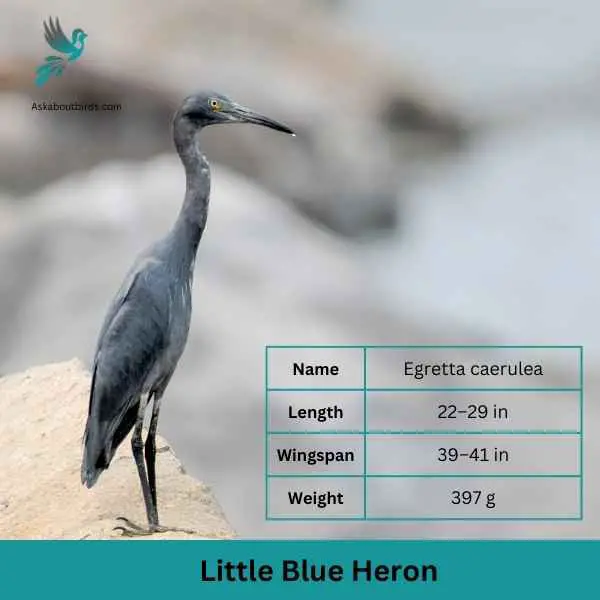
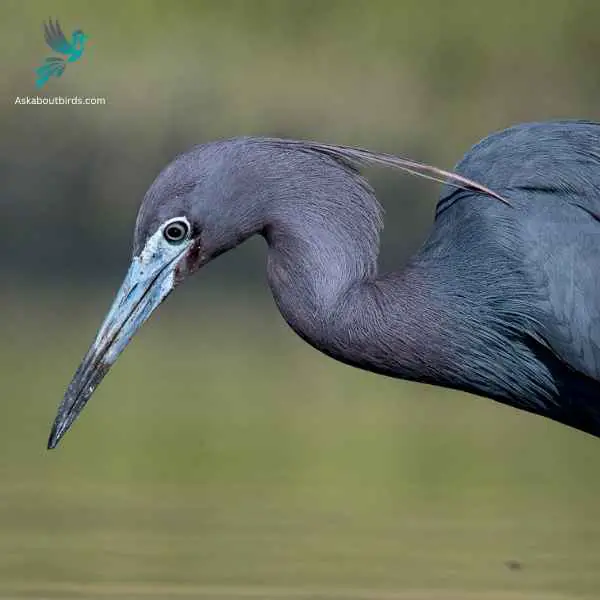
| Feature | Measurement |
|---|---|
| Scientific Name | Egretta caerulea |
| Length | 22–29 in |
| Wingspan | 39–41 in |
| Weight | 397 g |
The Little Blue Heron is a slender and elegant wading bird, often seen foraging in freshwater or saltwater habitats, especially in the southeastern parts of the United States.
Appearance: This heron undergoes a fascinating color transition as it matures. Juvenile Little Blue Herons are white, but they gradually acquire the slate-blue plumage that characterizes adults. The adult has a dark blue-gray body with a purplish neck and head. Their bill is grayish with a black tip.
Diet: The diet of the Little Blue Heron consists mainly of small fish, but they also feed on crustaceans, insects, and other small aquatic animals. Using stealth, they slowly stalk their prey in shallow waters before striking with their long, sharp bill.
Reproduction: Little Blue Herons nest in colonies, often with other wading birds. They build platform nests in trees or shrubs close to water bodies. The female typically lays a clutch of 3 to 5 pale blue eggs. Both parents participate in incubation and feeding the chicks once they hatch.
American Purple Gallinule
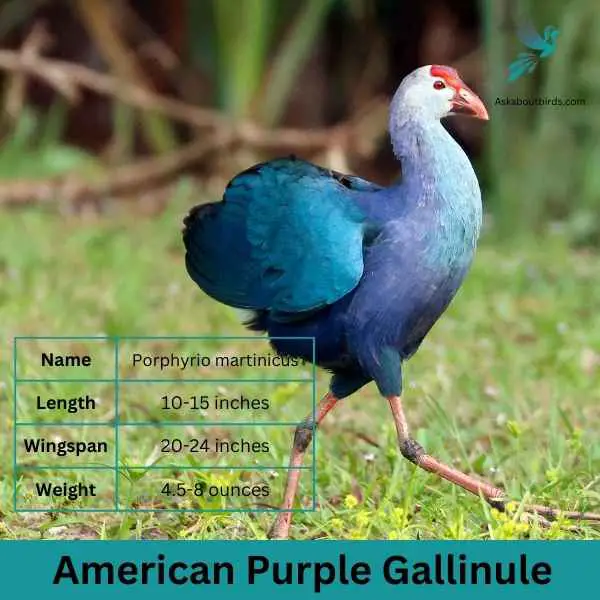
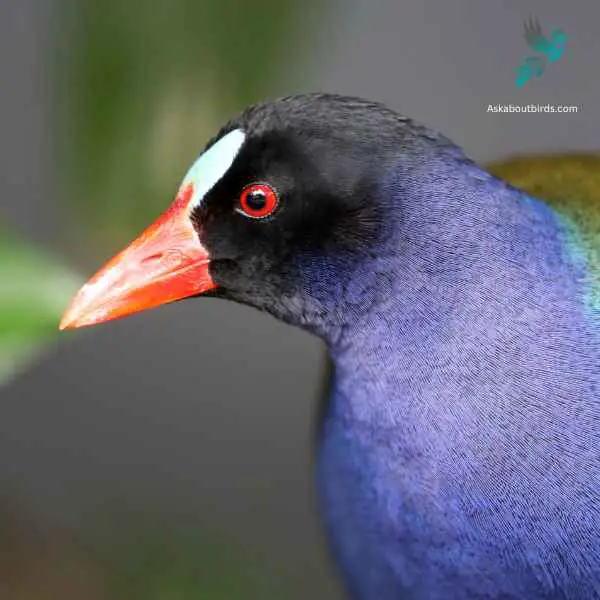
| Feature | Measurement |
|---|---|
| Scientific Name | Porphyrio martinicus |
| Length | 10-15 inches |
| Wingspan | 20-24 inches |
| Weight | 4.5-8 ounces7 ounces |
The American Purple Gallinule is an eye-catching waterbird recognized for its radiant plumage and peculiar, long-toed feet which enable it to tread gracefully over floating vegetation.
Appearance: This bird displays a captivating array of colors. Its head, neck, and underparts boast a rich purple-blue hue, which transitions to green and turquoise on its wings. A prominent white patch under the tail, a yellow-tipped red bill, and striking yellow legs with elongated toes further accentuate its distinct appearance.
Diet: The American Purple Gallinule feeds primarily on aquatic plants and seeds. However, it’s also an opportunistic feeder and won’t shy away from small aquatic creatures like frogs, insects, and even small fish. Their elongated toes enable them to forage conveniently on lily pads and other floating vegetation.
Reproduction: Nests are built in dense marsh vegetation, usually just above the water’s surface. The female typically lays a clutch of about 5 to 10 eggs. Both parents participate in incubation, which lasts about 3 weeks. Once the chicks hatch, they are precocial – quickly learning to swim and follow their parents around, although they still rely on the parents for feeding for a few weeks.
Where to Spot Alabama’s Blue Birds
Alabama’s diverse landscapes serve as a haven for bird enthusiasts. Here are the top locations known for their remarkable avian diversity, particularly for spotting blue birds:
- Dauphin Island: Often referred to as the ‘birdiest’ place in North America, this barrier island becomes a hotspot for migratory birds, especially during the spring and fall. Its coastal location and wooded areas make it an essential stopover for many species.
- Wheeler National Wildlife Refuge: Situated along the Tennessee River, this refuge provides habitats for both migratory waterfowl and songbirds. The diverse ecosystems within the refuge, from marshes to hardwood forests, attract a wide variety of bird species.
- Bankhead National Forest: Located in the heart of the Appalachian Mountains, this forest offers rugged landscapes and pristine waterways. It’s an ideal spot to encounter woodland birds, including various blue birds and warblers.
- Conecuh National Forest: Lying in southern Alabama, this forest boasts longleaf pine ecosystems and wiregrass. Its unique habitats attract a range of bird species, making it a go-to spot for bird watching.
- Eufaula National Wildlife Refuge: Positioned on the Chattahoochee River, this refuge provides habitats for over 230 bird species. Its mixture of wetlands and woodlands makes it a perfect location to spot an array of waterfowl, waders, and songbirds.
| {State’s Blue birds | Top Spots for Blue Birds |
|---|---|
| Georgia’s Blue birds | 1. Kennesaw Mountain National Battlefield Park 2. Piedmont Park, Atlanta 3. Jekyll Island |
| Florida’s Blue birds | 1. St.Mark’sNational Wildlife Refuge 2. Sanibel Island 3. Ocala National Forest |
| Mississippi’s Blue birds | 1. Stennis Space Center buffer zone 2. Mississippi Sandhill Crane National Wildlife Refuge 3. Tishomingo State Park |
| Tennessee’s Blue birds | 1. Cumberland Plateau 2. Fall Creek Falls State Park 3. Land Between the Lakes National Recreation Area |
FAQs on Blue Bird Species Found in Alabama
Where can one find the indigo bunting range map?
The indigo bunting range map provides insights into the habitats of these blue beauties. Primarily, they are located in the eastern half of North America, stretching from southern Canada down to parts of South America. These small birds, known for their royal blue plumage, favor areas with scattered trees, especially during the breeding season. Their presence is influenced by insect populations, and while they’re a treat to spot, they don’t frequently visit bird feeders.
How does the habitat of the blue gray gnatcatcher vary?
Blue gray gnatcatchers, these tiny birds with a distinctive vocal nature, can be seen flitting around tree trunks and scattered trees. While they predominantly reside in the southern half of North America, their habitat stretches to parts of southern Florida. Their small size, dark wings, and a hint of a yellow throat distinguish them from other species. Preferring to eat insects, they’re seldom visitors to common bird feeders filled with sunflower seeds.
What are the nesting habits of barn swallows young birds?
Barn swallows, a beautiful bird with dark brown wings and white wing bars, are known for their adaptability. The barn swallow range map indicates their vast presence from the northern half down to South America. In their natural habitat, they often resort to nest boxes, though they also favor natural cavities in dead trees or other similar structures. Their diet primarily consists of insects, which they skillfully catch mid-flight.
What are the distinguishing features of eastern bluebirds?
Eastern bluebirds are a delightful sight, known for their vibrant blue plumage that adorns their backs and wings. These birds, often associated with open woodlands and meadows, showcase a rich orange chest contrasting with their blue hue. Frequently found in the eastern regions of North America, they have a preference for natural cavities or nest boxes for breeding. Their melodious songs add to the charm they bring to any birdwatcher’s day.
